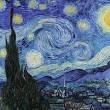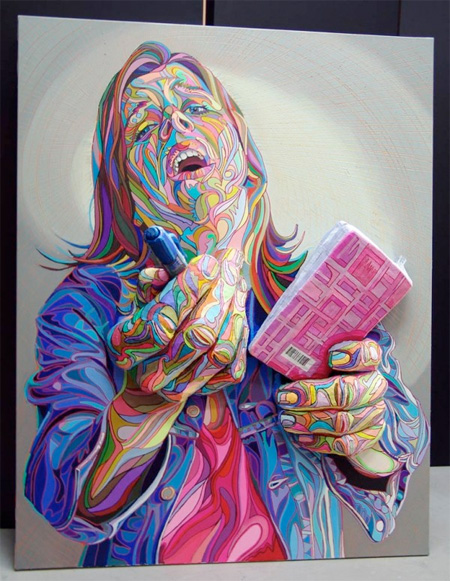The Timeless Beauty of Horse Painting
Horse painting has been a cherished art form throughout history, capturing the majestic beauty and grace of these magnificent creatures on canvas. From ancient cave paintings to modern masterpieces, horses have been a popular subject for artists seeking to convey strength, elegance, and freedom.
One of the earliest known examples of horse painting dates back to prehistoric times, where primitive artists depicted horses in motion on the walls of caves. These early artworks not only served as a record of daily life but also as a form of reverence for the animals that played a crucial role in human survival.
As artistic techniques evolved over time, horse painting became more refined and expressive. During the Renaissance period, artists like Leonardo da Vinci and Peter Paul Rubens portrayed horses with remarkable realism and attention to detail, capturing their anatomy and movement with precision.
In the 19th century, horse painting experienced a resurgence in popularity with artists such as George Stubbs and Rosa Bonheur creating iconic works that celebrated the spirit and vitality of horses. Their paintings often depicted horses in action – galloping across fields, pulling carriages, or participating in equestrian events.
Today, horse painting continues to captivate art enthusiasts around the world. Contemporary artists explore new styles and techniques to interpret the beauty of horses in innovative ways. Whether it’s through realistic portrayals or abstract interpretations, each artwork conveys a deep appreciation for these noble animals.
From classical equestrian portraits to modern interpretations of equine beauty, horse painting remains a timeless art form that celebrates the enduring bond between humans and horses. Through brushstrokes and colors, artists convey the essence of these magnificent creatures – their strength, grace, and untamed spirit.
Exploring the Art of Horse Painting: History, Techniques, and Symbolism
- What is the history of horse painting?
- How do artists capture the beauty and movement of horses in paintings?
- Who are some famous artists known for their horse paintings?
- What are the different styles and techniques used in horse painting?
- Are there any specific symbolic meanings associated with horses in art?
What is the history of horse painting?
The history of horse painting is a rich tapestry that spans centuries, reflecting the deep connection between humans and horses throughout civilization. From ancient cave paintings depicting horses in motion to Renaissance masterpieces capturing their beauty with intricate detail, artists have long been inspired by the grace and power of these majestic creatures. The evolution of horse painting showcases not only artistic skill but also a profound respect for the role horses have played in shaping human history – as companions, workers, and symbols of freedom and strength. Each brushstroke in horse paintings tells a story of admiration and reverence for these noble animals, immortalizing their timeless allure on canvas for generations to come.
How do artists capture the beauty and movement of horses in paintings?
Capturing the beauty and movement of horses in paintings is a challenging yet rewarding endeavor for artists. To convey the grace and power of these majestic creatures on canvas, artists often study the anatomy and behavior of horses closely. They observe how light plays on their muscles, how their mane flows in the wind, and how they move with elegance and strength. Through careful attention to detail, use of dynamic brushstrokes, and a deep understanding of composition, artists bring life to their horse paintings. By skillfully depicting the fluidity of movement, the intensity of expression, and the essence of each individual horse, artists create timeless artworks that evoke a sense of awe and admiration for these magnificent animals.
Who are some famous artists known for their horse paintings?
Throughout art history, several renowned artists have gained recognition for their exceptional horse paintings. One of the most notable figures is George Stubbs, an 18th-century English painter famous for his detailed and anatomically accurate depictions of horses. His works, such as “Whistlejacket,” showcase a deep understanding of equine anatomy and movement. Another prominent artist known for his horse paintings is Rosa Bonheur, a French painter from the 19th century whose masterpieces like “The Horse Fair” capture the energy and dynamism of horses in action. These artists, among others like Alfred Munnings and Sir Edwin Landseer, have left a lasting impact on the genre of horse painting with their skillful interpretations of these majestic animals.
What are the different styles and techniques used in horse painting?
In horse painting, artists employ a variety of styles and techniques to capture the essence and beauty of these majestic creatures. Realism is a popular approach, focusing on intricate details and lifelike representations of horses in their natural surroundings. Impressionism offers a more fluid and expressive interpretation, using bold brushstrokes and vibrant colors to convey movement and emotion. Additionally, abstract styles may be utilized to depict horses in a more conceptual or symbolic manner, emphasizing shapes, lines, and colors over realistic forms. Mixed media techniques, such as collage or digital art, provide artists with innovative ways to explore the versatility of horse painting. Each style and technique brings its own unique perspective to the portrayal of horses, showcasing the diversity and creativity within this timeless art form.
Are there any specific symbolic meanings associated with horses in art?
In the realm of art, horses hold a rich tapestry of symbolic meanings that have transcended time and cultures. Often depicted as symbols of strength, freedom, and power, horses in art evoke a sense of vitality and movement. In many artistic traditions, horses symbolize courage, endurance, and nobility, reflecting their historical significance as loyal companions and partners in human endeavors. Additionally, horses can represent wildness and untamed nature, embodying a sense of primal energy and instinct. Artists harness these symbolic meanings to infuse their horse paintings with layers of depth and emotion, inviting viewers to contemplate the profound connection between humans and these majestic creatures.





